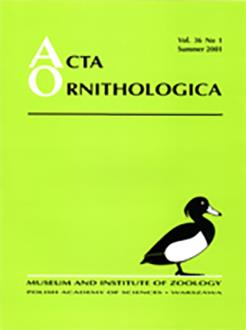The nesting period of the Spotted Munia is from July to November, a period with frequent rains. Built of grass, nests (n = 60) were spherical or dome-shaped, with a lateral entrance-hole oriented mainly along the most frequent wind direction. They were mostly built on twigs within the tree canopy, the majority of them on thorny plant species. The mean depth and diameter of the nests were 12.32 cm and 4.18 cm respectively. Nesting activities were shared by both sexes. Four to six eggs were laid. The incubation period in 17 pairs varied from 10 to 15 days. All the nests (n = 60) were situated on four plant species only, the greatest preference being for Toddalia asiatica (50%), followed by Gymnosporia montana (25%) and Acacia chundra (20%). Although 50% of the nests were found on T. asiatica, this plant is a straggler and no nest was built on it if it was not present in association with G. montana. For constructing nests the Spotted Munia selected short and small trees in a microhabitat with low canopy cover.
How to translate text using browser tools
1 July 2001
Nesting Ecology of the Spotted Munia Lonchura punctulata in Mudumalai Wildlife Sanctuary (Southern India)
Varadhrajan Gokula
S. Ali,
S. D. Ripley
1987. Compact handbook of the birds of India and Pakistan. Oxford University Press, New Delhi. Google Scholar
M. J. Bechard
,
R. L. Knight
,
D. G. Smith
,
R. E. Fitzner
1990. Nest sites and habitat of sympatric Hawks (Buteo spp.) in Washington. J. Field Ornithol. 61: 159–170. Google Scholar
N. E. Collias
,
E. C. Collias
1984. Nest building and bird behaviour. Princeton University Press, Princeton, New Jersey. Google Scholar
A. A. Desai
1991. The home range of elephants and its implications for management of the Mudumalai Wildlife Sanctuary, Tamil Nadu. J. Bombay Nat. Hist. Soc. 88: 145–156. Google Scholar
C. Hullsieg
,
D. M. Becker
1990. Nest site habitat selected by Merlins in south-eastern Montana. Condor 92: 688–694. Google Scholar
T. E. Martin
1992. Breeding season productivity considerations: what are the appropriate habitat features for management? In:
J. M. Hagan,
D.W. Johnston (eds.).
Ecology and conservation of Neotropical migrant landbirds. Smithsonian Inst. Press, Washington D. C. pp. 445–473. Google Scholar
T. E. Martin
1993. Nest predation and nest sites: new perspective and old patterns. Bioscience 43: 523–532. Google Scholar
T. E. Martin
,
J. J. Roper
1988. Nest predation and nest-site selection of a western population of the Hermit Thrush. Condor 90: 51–57. Google Scholar
M. T. Murphy
1983. Nest success and nesting habits of Eastern Kingbirds and other flycatchers. Condor 85: 208–219. Google Scholar
R. C. Sharma,
D. Bhatt
1996. Some ecological aspects of the breeding biology of Spotted Munia Lonchura punctulata. Proc. Pan-Asian Ornithol. Congr. Coimbatore. p. 91. Google Scholar
K. Titus
,
J. A. Mosher
1981. Nest site habitat selected by woodland Hawks in the Central Appalachians. Auk 98: 270–281. Google Scholar
L. Vijayan
1984. Comparative biology of drongos (Family: Dicruridae, Class: Aves) with special reference to ecological isolation. PhD. thesis, University of Bombay, India. Google Scholar

Acta Ornithologica
Vol. 36 • No. 1
July 2001
Vol. 36 • No. 1
July 2001
breeding ecology
India
Lonchura punctulata
nest site
nesting
Spotted Munia




